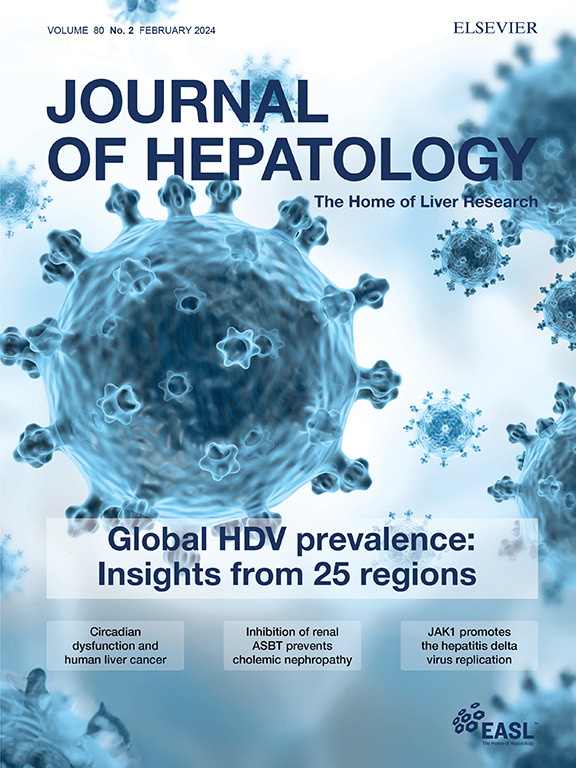Mechanisms and Management of Graft In- and Out-flow in Liver Transplantation: A Narrative Review of the Literature and Guide for Interventional Management
IF 26.8
1区 医学
Q1 GASTROENTEROLOGY & HEPATOLOGY
引用次数: 0
Abstract
Background and Aims
Management of the dual vascular supply of liver grafts in liver transplantation (LT) is increasingly recognized as crucial to achieving adequate graft function. We aim to review how the relationship between graft in-flow and out-flow affects graft function, and how surgeons can manage graft function within the context of liver hemodynamic autoregulation. This includes mechanisms of such autoregulation including the hepatic artery buffer response (HABR), and the impact of porto-systemic circulatory changes on graft inflow.Methods & Results (Review)
This study represents a narrative review of the literature along with the editorial input/practices of the authors. A complex mechanistic understanding can guide surgeons in the management of common and even un-common vascular conditions after transplantation. Portal hyperperfusion is the most common, usually resulting from decreased intrahepatic adenosine and arterial vasoconstriction via the HABR. Such a concern is now recognized as the treatment of Small-for-Size Syndrome, and thus management of vascular in- and out-flow is also critical to the use of small liver grafts to preserve donor safety. Portal inflow modulation (PIM) using splanchnic vasodilators, splenic embolization, or splenectomy are all recognized treatments for hyperperfusion. However, the management of portal hypo-perfusion is less well described, with only isolated case reports describing the augmentation of portal venous in-flow. Finally, the impact of graft out-flow is reviewed, with a focus on how out-flow can improve graft utility in living donor liver transplantation.Conclusions
Overall, an understanding of complex hepatic vascular regulation is essential to optimizing liver graft function in transplantation. This review may help surgeons as they continue to strive for improved access to transplantation across the world.肝移植中移植物流入和流出的机制和管理:文献综述和介入管理指南
背景和目的肝移植(LT)中对肝移植双血管供应的管理越来越被认为是实现足够移植物功能的关键。我们的目的是回顾移植物流入和流出之间的关系如何影响移植物功能,以及外科医生如何在肝脏血流动力学自动调节的背景下管理移植物功能。这包括这种自动调节机制,包括肝动脉缓冲反应(HABR),以及门静脉-体循环变化对移植物流入的影响。方法,结果(综述)本研究代表了对文献的叙述性综述以及作者的编辑输入/实践。复杂的机制理解可以指导外科医生处理移植后常见甚至不常见的血管状况。门脉高灌注是最常见的,通常由肝内腺苷减少和经HABR动脉血管收缩引起。这种担忧现在被认为是小尺寸综合征的治疗方法,因此管理血管进出对于使用小肝移植以保护供体安全也是至关重要的。门静脉流入调节(PIM)使用脾脏血管扩张剂,脾栓塞,或脾切除术都是公认的治疗过度灌注。然而,对门静脉灌注不足的处理却没有很好的描述,只有个别病例报告描述了门静脉内流量的增加。最后,回顾了移植物流出的影响,重点是流出如何提高活体供肝移植中的移植物效用。综上所述,了解复杂的肝血管调节对优化移植肝功能至关重要。这篇综述可能会帮助外科医生继续努力改善世界各地的移植机会。
本文章由计算机程序翻译,如有差异,请以英文原文为准。
求助全文
约1分钟内获得全文
求助全文
来源期刊

Journal of Hepatology
医学-胃肠肝病学
CiteScore
46.10
自引率
4.30%
发文量
2325
审稿时长
30 days
期刊介绍:
The Journal of Hepatology is the official publication of the European Association for the Study of the Liver (EASL). It is dedicated to presenting clinical and basic research in the field of hepatology through original papers, reviews, case reports, and letters to the Editor. The Journal is published in English and may consider supplements that pass an editorial review.
 求助内容:
求助内容: 应助结果提醒方式:
应助结果提醒方式:


